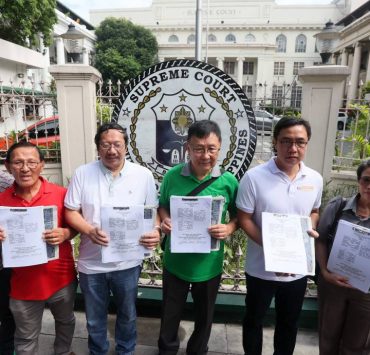The role of digital technologies in Asia Pacific

As temperatures rise and extreme weather events such as floods and typhoons increase in frequency, we are seeing in our day to day lives the impact of climate change. The Asia-Pacific region is particularly affected and communities across the region are being confronted with the undeniable truth that our climate is changing at an alarming rate.
In 2022 alone, extreme weather events in the region affected over 50 million people and led to economic losses exceeding $36 billion, according to the World Meteorological Organization. Climate-related losses could amount to around 5 percent of the region’s gross domestic product by mid-century. With the climate changing rapidly, and the challenges that come with it, we need swift action to prevent these losses. Digital technologies, including artificial intelligence (AI), have huge potential in supporting us to address climate challenges in the region.
The recently launched “Harnessing the power of digital technologies for climate adaptation” report by AVPN, supported by Google.org and Asia Development Bank, highlights pressing climate risks in Asia Pacific and how technology-based solutions have successfully tackled them.
Agriculture plays a critical role across Asian economies with over 2.2 billion people relying on it for their livelihoods. However, climate change and natural disasters have affected food production and the quality of our crops. AI can help address some of agriculture issues, such as by improving the identification and development of more nutritious crop and livestock breeds. Not only that, researchers can use AI to identify genetic segments of our crops with preferred traits resilient to climate change, and use that to develop superior crop varieties.
Another way digital technologies support the increasing challenges from climate change is with water resources. Water availability in East Asia and the Pacific is 20 percent lower than the global average, in South Asia the number rises to 80 percent, leading to significant climate risks. It is projected that the worst droughts in South Asia will occur 1.5 times more frequently between 2035 and 2100 compared to the previous century. Climate change is also linked to the increasing prevalence of erratic rainstorm patterns, as well as increasing rainfall intensity and frequency, leading to the challenge of ensuring adequate water storage facilities to cope with sudden influxes of water. To address these issues, climate tech ventures have been leveraging remote sensing, the Internet of Things, and cloud computing to support the monitoring of water levels. AI has also been used to ensure more accurate predictions of rainfall for people to better manage water usage and reduce wastage.
We have also been seeing how unpredictable weather events can devastate even the most developed cities. In April 2024, the United Arab Emirates faced an unprecedented amount of rain, surpassing a year’s worth of rainfall in just one day. This record-breaking deluge resulted in flash floods that disrupted transportation, and even temporarily halted flights in Dubai, home to one of the world’s busiest airports. Innovations that provide localized, real-time weather monitoring and AI-based forecasting can improve the detection and prediction of disasters, to enable more rapid response for reducing damages in disaster-prone areas in both cities and rural areas. For example, Google’s Flood Hub currently covers river basins across over 80 countries worldwide, providing critical flood forecasting for over 1,800 sites and covering a population of 460 million people.
The Asia-Pacific region stands at a critical crossroads in its fight against climate challenges. Digital technologies offer powerful solutions, but their full potential can only be unlocked with increased funding and investment. Social investors—philanthropists, impact funds, and corporations—play a key role in driving better climate adaptation and resilience. The urgency is undeniable, but currently social investors still face hurdles in understanding the investment landscape with climate technology-based solutions and identifying the investment opportunities that currently exist. By bridging this knowledge gap, we can pave the way for social investors to help create a climate-resilient future. We must act now, as the race against escalating climate challenges intensifies.
By Tristan Ace and Kate Brandt
Tristan Ace is chief program officer at AVPN and Kate Brandt is chief sustainability officer at Google.
















